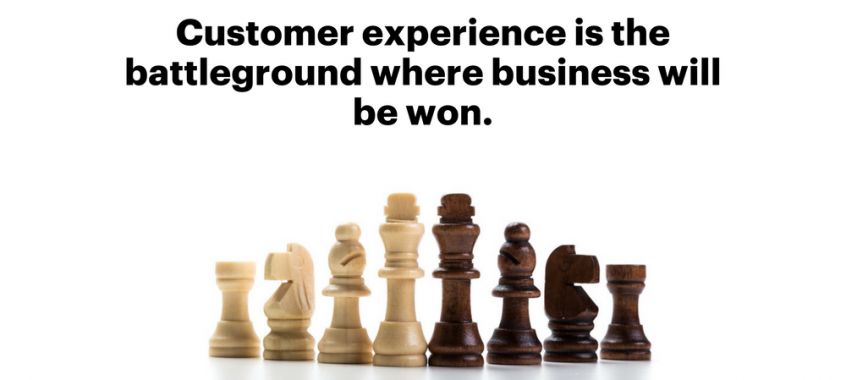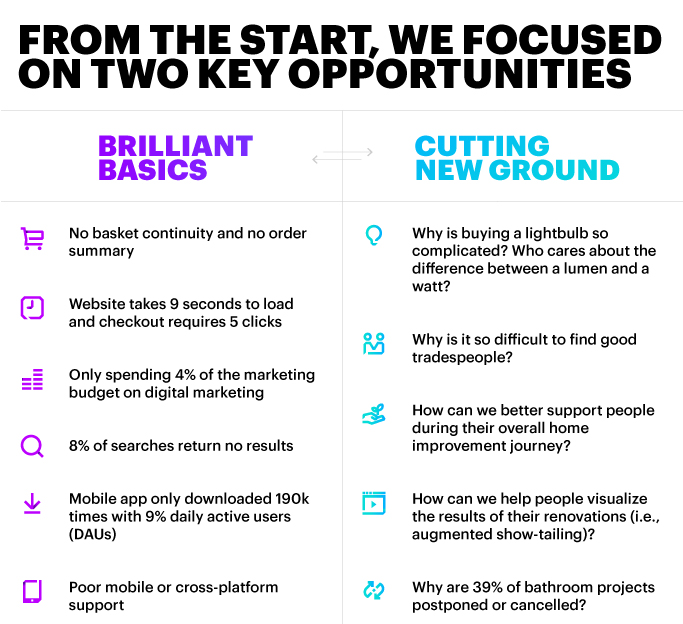This is the third in a five-part series. The first two parts can be found here and here.
If you’ve been to a home improvement store lately, your experience may have depended on a few factors. For example, the process of buying a lightbulb is incredibly complicated. What’s the difference between a watt and a lumen? More to the point, does it matter, when all I want is to be able to read the newspaper at my dining room table? In addition, if you’ve purchased anything that needed assembly, you may have turned to YouTube for a video—ideally, that video should have been produced by the retail chain and used as an extension of its customer experience.
Home improvement company—or media company?
Insurers can learn a lot from the retail sector, which is under direct pressure from e-commerce, Amazon and other customer-centric, online-first organizations.

For example, consider the role of video as part of the customer experience. Any home improvement store that wants to stay in the game will realize that it’s actually a media company, and that it won’t win customers with just its ability to attractively display nails, lightbulbs and 2x4s. Instead, its future hinges on its ability to produce high-definition video and to manage, promote and publish useful content.
In action: Brilliant Basics and Cutting New Ground
Accenture worked with a home improvement chain to support its digital transformation. This chain has more than 1,100 stores and about 80,000 employees. We started with a hard look at the Brilliant Basics it needed to get right. For example, it took nine seconds for its website to load, and online customers needed to click five times to make a purchase. It’s easy to dismiss these as trivial, but customer expectations are set by online giants like Amazon, whose customer-centric data capabilities can make tailored recommendations and one-click ordering (never mind one-day shipping) its standard. In comparison, nine seconds is an eternity.
See also: Why Fairness Matters in Federal Reforms
Next, we identified areas for Cutting New Ground: what it meant for the home-improvement industry, and where the opportunities lay for this retailer. It meant going back to some fundamental value propositions. I mentioned earlier the complexity of buying a lightbulb—the same goes for nails. That was the nexus of one Cutting New Ground initiative. We visualized the Shazam of home improvement parts, fueled by AI and visual search. Customers simply take a photo of the part they want and are directed to it online or in-store. That’s just one of eight innovations that the retail chain put in place.
 Three billion reasons to be brilliant
Three billion reasons to be brilliant
Importantly, the retailer needed do both Brilliant Basics and Cutting New Ground. Brilliant Basics effectively transforms the core of the organization (enabling it to serve its customers better), contributes to the organization’s overall health and supports a more stable foundation. It also reduces the cost to serve and releases capital for Cutting New Ground.
This particular project generated opportunities worth $3 billion, and the new initiatives generate 23% of the retailer's sales. This sales boost is new revenue, not produced by shifting customers from one digital channel to another.
See also: Medical Homes Change the Game
Convinced? With this case study in mind, it’s time to think back to the insurance industry. Next, I’ll look at some of the Brilliant Basics opportunities for our industry, and how they can be a blueprint for digital transformation.
 For example, consider the role of video as part of the customer experience. Any home improvement store that wants to stay in the game will realize that it’s actually a media company, and that it won’t win customers with just its ability to attractively display nails, lightbulbs and 2x4s. Instead, its future hinges on its ability to produce high-definition video and to manage, promote and publish useful content.
In action: Brilliant Basics and Cutting New Ground
Accenture worked with a home improvement chain to support its digital transformation. This chain has more than 1,100 stores and about 80,000 employees. We started with a hard look at the Brilliant Basics it needed to get right. For example, it took nine seconds for its website to load, and online customers needed to click five times to make a purchase. It’s easy to dismiss these as trivial, but customer expectations are set by online giants like Amazon, whose customer-centric data capabilities can make tailored recommendations and one-click ordering (never mind one-day shipping) its standard. In comparison, nine seconds is an eternity.
See also: Why Fairness Matters in Federal Reforms
Next, we identified areas for Cutting New Ground: what it meant for the home-improvement industry, and where the opportunities lay for this retailer. It meant going back to some fundamental value propositions. I mentioned earlier the complexity of buying a lightbulb—the same goes for nails. That was the nexus of one Cutting New Ground initiative. We visualized the Shazam of home improvement parts, fueled by AI and visual search. Customers simply take a photo of the part they want and are directed to it online or in-store. That’s just one of eight innovations that the retail chain put in place.
For example, consider the role of video as part of the customer experience. Any home improvement store that wants to stay in the game will realize that it’s actually a media company, and that it won’t win customers with just its ability to attractively display nails, lightbulbs and 2x4s. Instead, its future hinges on its ability to produce high-definition video and to manage, promote and publish useful content.
In action: Brilliant Basics and Cutting New Ground
Accenture worked with a home improvement chain to support its digital transformation. This chain has more than 1,100 stores and about 80,000 employees. We started with a hard look at the Brilliant Basics it needed to get right. For example, it took nine seconds for its website to load, and online customers needed to click five times to make a purchase. It’s easy to dismiss these as trivial, but customer expectations are set by online giants like Amazon, whose customer-centric data capabilities can make tailored recommendations and one-click ordering (never mind one-day shipping) its standard. In comparison, nine seconds is an eternity.
See also: Why Fairness Matters in Federal Reforms
Next, we identified areas for Cutting New Ground: what it meant for the home-improvement industry, and where the opportunities lay for this retailer. It meant going back to some fundamental value propositions. I mentioned earlier the complexity of buying a lightbulb—the same goes for nails. That was the nexus of one Cutting New Ground initiative. We visualized the Shazam of home improvement parts, fueled by AI and visual search. Customers simply take a photo of the part they want and are directed to it online or in-store. That’s just one of eight innovations that the retail chain put in place.
 Three billion reasons to be brilliant
Importantly, the retailer needed do both Brilliant Basics and Cutting New Ground. Brilliant Basics effectively transforms the core of the organization (enabling it to serve its customers better), contributes to the organization’s overall health and supports a more stable foundation. It also reduces the cost to serve and releases capital for Cutting New Ground.
This particular project generated opportunities worth $3 billion, and the new initiatives generate 23% of the retailer's sales. This sales boost is new revenue, not produced by shifting customers from one digital channel to another.
See also: Medical Homes Change the Game
Convinced? With this case study in mind, it’s time to think back to the insurance industry. Next, I’ll look at some of the Brilliant Basics opportunities for our industry, and how they can be a blueprint for digital transformation.
Three billion reasons to be brilliant
Importantly, the retailer needed do both Brilliant Basics and Cutting New Ground. Brilliant Basics effectively transforms the core of the organization (enabling it to serve its customers better), contributes to the organization’s overall health and supports a more stable foundation. It also reduces the cost to serve and releases capital for Cutting New Ground.
This particular project generated opportunities worth $3 billion, and the new initiatives generate 23% of the retailer's sales. This sales boost is new revenue, not produced by shifting customers from one digital channel to another.
See also: Medical Homes Change the Game
Convinced? With this case study in mind, it’s time to think back to the insurance industry. Next, I’ll look at some of the Brilliant Basics opportunities for our industry, and how they can be a blueprint for digital transformation.







